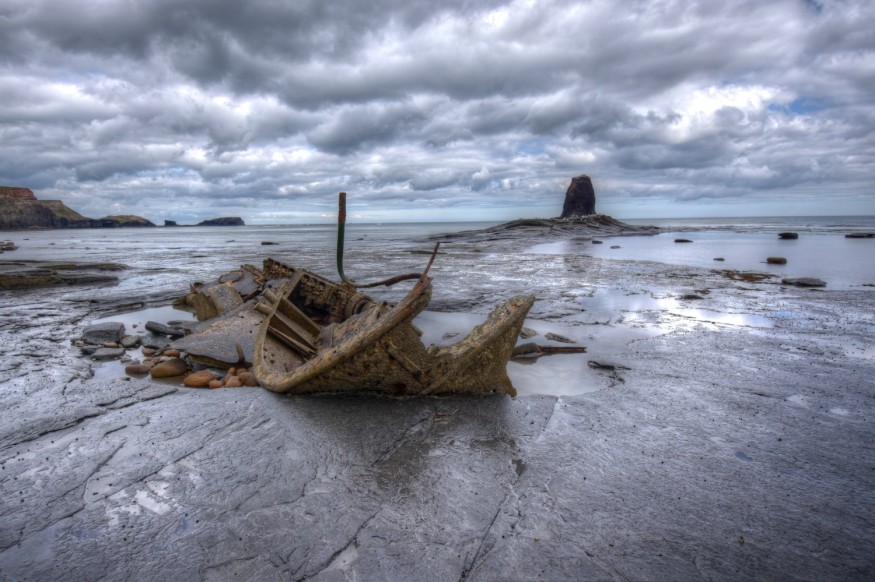UK has some of world's the strangest beaches, complete with shipwrecks, broken glass, gangs, and naturists. While some of these beaches are truly breathtaking, people who want to visit should first understand some grim facts about these places.

1. Orford Ness, Suffolk
Orford Ness appears to be just another long spit of shingle, notable for its flora and fauna.
Visitors to the beach, however, should proceed with caution as gangs and conspiracy theorists frequent the unkempt beach with dilapidated silos.
To deter curious tourists, the National Trust has restricted access to the area to a small ferry that must be booked on a Thursday and posted bomb warning signs.
2. Danes Dyke, Flamborough Head, East Yorkshire
From the hidden carpark tucked away in the woodlands, wild garlic and bluebells hide the man-made declivity that would abruptly lead to a beach of smooth white stones.
Some people believe these white stones with holes are hag stones, which, some believe, are mystical in nature. This beach attracts modern-day "witches" and spiritual seekers.
3. Skrinkle Haven, Pembrokeshire
Some accounts report that Skrinkle Haven has frequent UFO sightings, but the landscape is alluringly popular with a long flight of stairs and a hidden tunnel that leads to the beach.
4. Sandwood Bay, Sutherland
This beach is beautiful in the morning. Beachgoers who insist on going for a night swim, on the other hand, will be bitten by blood-sucking midges. Although it is not impossible, only a few people risk camping on this beach.
Beachgoers do not frequent this beach. Even though the newspapers continue to feature Sandwood Bay, visitors can sometimes be counted by hand.
5. Seaham, County Durham
Seaham Beach is a sand and shingle stretch with earthy cliffs on either side. A lot of glass bead collectors frequent this beach. Durham was once a major bottle-making county. Much of the shattered glass ended up in the sea.
The broken glass would have been smoothed over years later. Now and then, a smooth glass bead would wash up on the beach, sending collectors into a frenzy. The most common types are clear and greenish. The blue and red nuggets are the rarest.
6. Tusker Rock and Traeth Mawr, Glamorgan
Tusker Rock is over a mile from Ogmore-by-Sea. It is mostly accessible only by experienced kayakers, other boats try to avoid it. Tusker Rock is famous for being made of shipwrecks, lots of them! Some of the shipwrecks date back to the 19th century.
Traeth Mawr is a long, cliff-backed strand with tidal pools and fossils. However, it is frequented by naturists or nudists.
7. Bradwell-on-Sea, Essex
The stretch of this coast is so remote that rare wildflowers bloom in this area. It is also right beside a nuclear power plant that is up for development by the China General Nuclear Power Group. Ironically, the best swimming spots on this beach are the ones closest to the power plant.
8. Saltwick Bay, North Yorkshire
Saltwick is also home to many forgotten shipwrecks. People pass by the beach to pick up gemstones washed ashore. There are also fossils found on this beach. The oldest shipwreck on this beach is from 1869.
9. Dulas Bay, Anglesey
The unfortunate wreck of the Royal Charter in 1859 made this beach the favorite of those looking for gold nuggets washed ashore. Not many visit the beach for swimming. Other beaches in Anglesey are more suited for swimming and sun-bathing.
10. Camas an Lighe, Ardnamurchan, Highlands
Camas Beach is one of the beaches with singing sands. This beach is both remote and beautiful. An eerie distant whine can be heard when the sands are moved by the right amount of wind and humidity.
It is reputedly the site of a Jacobite battle back in 1745, and the site of Second World War commando training, so visitors should watch out for unexploded munitions.
Related article : Experts Struggle to Identify Bloated Alien-Like Creature Washed Up on Australian Beach
© 2025 NatureWorldNews.com All rights reserved. Do not reproduce without permission.





